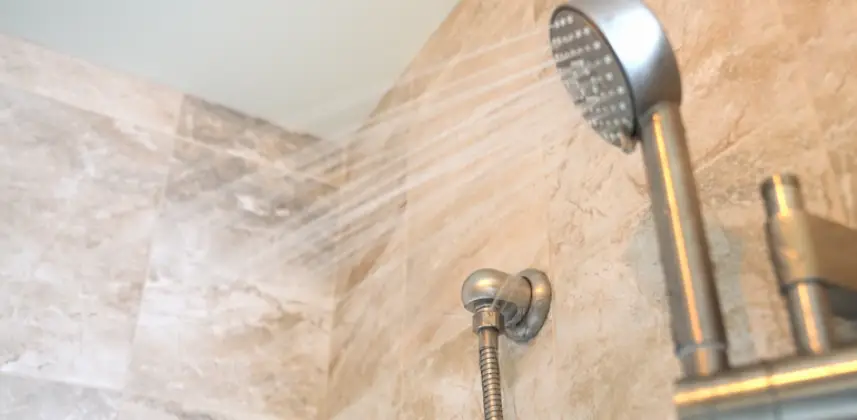
How to Replace a Shower Arm in 7 Easy Steps
Whether you need to replace a shower arm due to leaking, residue, or rust (or you simply want to upgrade), it’s a job most homeowners can do themselves with the tools they already have on hand. If it’s time for a change, it’s time to learn how to replace a shower arm!
First, track down everything you’ll need:
- A new shower arm – (Make sure you get the right size by taking your existing shower arm to the hardware store. Follow steps 1 – 4 below.)
- Step stool
- Metal lubricant
- Vise grips
- Adjustable pipe wrench
- Plumbing tape or plumber’s compound
- Eye protection
- Rubber gloves
- Large bowl*
- Vinegar*
- Calcium and limescale remover*
*You will only need these items if your shower arm has a pipe scale or another residue.
How To Replace a Shower Arm
Now that you have everything you need, follow these seven easy steps to replace your shower arm:
- Shut off the water – Begin by cutting the water flow to the entire bathroom. You can accomplish this by shutting off the water main, usually located where your plumbing system connects with your water supply. You can also look for a shut-off valve for the shower – look under your bathroom sink or behind a removable wall panel. Still can’t find it? Here’s more information on locating the water shut-off valve.
- Remove the showerhead – It’s easier to remove the shower arm if you remove the showerhead first. Do this regardless of whether you’re keeping your existing showerhead or installing a new one. Hold the shower arm in place while you turn the showerhead nut with your pipe wrench. If the showerhead is coated in scale, hold it in a bowl filled with vinegar (you’ll need to hold the bowl up to the showerhead so that it is submerged) and soak it for a few minutes to loosen the minerals and make it easier to remove.
- Clean the existing shower arm – Clean away any additional scale, mold, or mildew from around the shower arm to make the shower arm easier to remove. We recommend using either calcium and limescale remover or vinegar.
- Unscrew the existing shower arm – Grasp the shower arm using your longest adjustable pipe wrench. Turn the wrench counterclockwise. It’s very important that you do this slowly. If the shower arm doesn’t loosen with ease, stop immediately so you don’t break it. If the shower arm does not come loose right away, use a metal lubricant to coat the area where the arm meets the wall for a few hours, then try again. Once you’ve unscrewed the shower arm successfully, you will see a pipe protruding from the wall with thread around the exterior of the pipe.
- Install the new shower arm – Before you insert your new shower arm, wrap the threaded end of the shower pipe with a few layers of plumbing tape—don’t worry, the threads will still work to secure the shower arm. If you don’t have any plumbing tape handy, create a waterproof seal with a pipe-joint compound. Then insert your new shower arm, threaded end first, turning clockwise. Ensure that the showerhead fits snugly and is twisted tightly.
- Reinstall the showerhead – Just as you did with the shower arm, apply either plumbing tape or plumbers compound to the threaded end of the showerhead before reinserting it onto the new shower arm. Turn the showerhead clockwise until snug, then turn one more half-turn.
- Test for leaks – Turn on the water supply for the bathroom and turn on the tap to divert a gentle flow of water to the new shower arm. If you spot any leaks, turn off the water and turn the shower arm or showerhead clockwise to tighten the seal.
Replacing an old shower arm is a quick and easy home improvement task that you can easily check off your to-do list this weekend. But if you find the job is messier or more challenging than expected, don’t hesitate to call for backup. At Mr. Rooter® Plumbing, we’re committed to amazing residential plumbing service with amazing results. Call us or request an estimate online.
This blog is made available by Mr. Rooter LLC, for educational purposes only to give the reader general information and a general understanding of the specific subject above. The blog should not be used as a substitute for a licensed plumbing professional in your state or region. Check with city and state laws before performing any household project.

